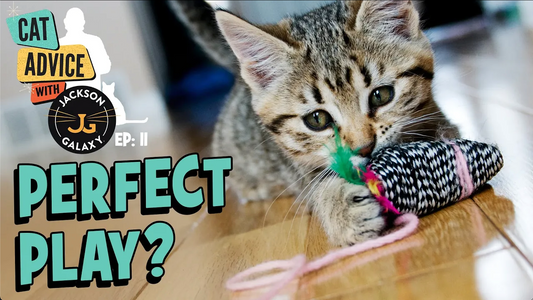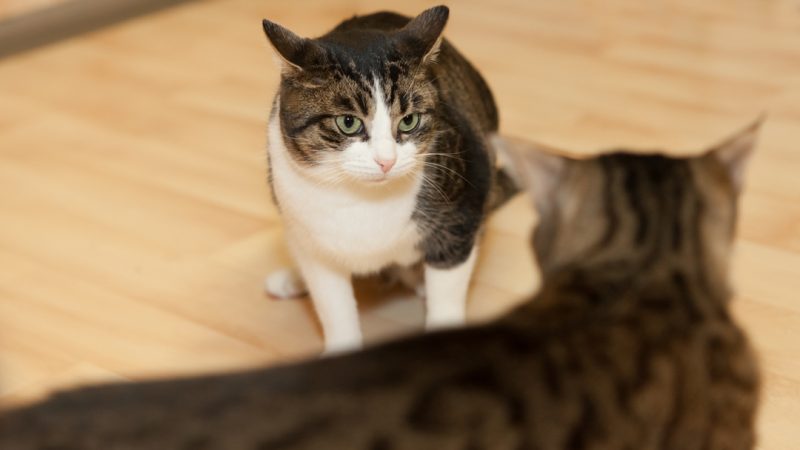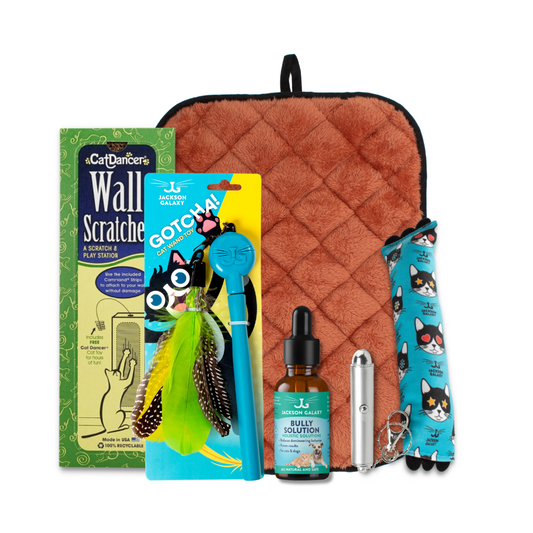Sometimes two cats decide that they just don’t like each other. Perhaps they’ve had an event of some sort, and this turned them into temporary enemies. But as with all conflicts, if you just hope it goes away, it won’t. Whatever the event was that led to the fight, the end result was a destruction of trust. The only path to reconciliation, is reintroduction. And this means we need to separate them and treat them like they’ve never met before. It’s the only way to truly clean the slate and reestablish a more harmonious relationship.
This leads to…
Step One: Follow Introduction Steps
Check out my recent post on The Do’s and Don’ts of Introducing Cats and follow the instructions to the letter. For easy reference, here is a brief overview of some of the key components to the process:
No free feeding: Make sure both cats are in a routine of meal feeding, rather than free feeding.
Separate Base Camps: Decide where you’re going to set up two separate base camps, so they each feel “territorially secure” during the reintroduction phase.
Scent soakers: Because cats are all about scent, make sure that you have plenty of “scent soakers” in each of their base camps.
No Peeking: One of the hallmarks of this integration method is that the cats will not lay eyes on each other for the first part of the process.
Site swapping: This is where each cat gets to explore the other’s territory without ever seeing each other.
The “Other Side of the Door” Feeding Ritual: Mealtime will consist of bowls set up on either side of a closed door, with the bowls gradually being moved closer over time. From there, we gradually grant them increased visual access to one another.
Eat, Play, Love: The idea here is to get both cats in a room together, sans any sort of barrier, and keep things as harmonious as possible for increasingly longer segments of time.
Step Two: Manage Expectations
Ultimately, you’ve got to be okay with how well (or not well) your cats get along. If there’s no blood being shed, no real violence, and nobody going to the vet, then they are, in fact, working it out… even if “their way” doesn’t look like “your way.” Cats have their own version of diplomacy and dialogue, and at some point, we have to allow them to coexist in ways they can live with. And just as with human bridge-building, trust takes time. Relationships, as we all know, are a process; a road sometimes smooth, and sometimes built on shifting sands. In other words, your cats are not going to become best friends again overnight. Give it time.
Step Three: Cat Detectivism
Cat Detectivism is all about becoming an astute observer to your cat’s behaviors and tendencies. But like any good detective, the key is objectivity. You must pull yourself out of the emotional center of the situation and remember… “Just the facts, ma’am.” In the context of this reintroduction process, pay special attention to your cat’s body language. What do they do when they walk in a room? What are they like when they see each other? Diligently observe these kinds of details, and if it suddenly feels like the harmony train is about to slip off the tracks, separate them if necessary, always aspiring to conclude any of their interactions on as positive a note as possible.
As always, this is a very basic overview of a sometimes very complicated process. To get the full skinny on these reintroduction ideas—as well as everything else about your cat—check out my latest book, Total Cat Mojo.















